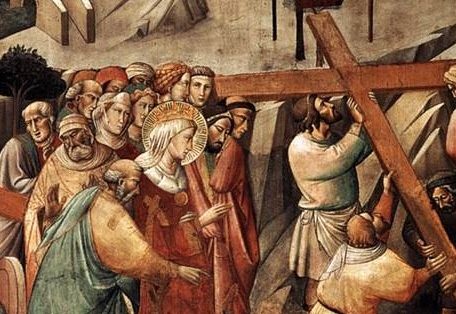St. Helena was the mother of the emperor Constantine the Great, and an empress of the Roman Empire.
Very little is known about Helena’s early life. She married Constantius Chorus, and had a son, Constantine, around 274. Nearly 20 years later, Constantius divorced Helena to advance his reputation and his standing in society. But Constantine remained loyal to his mother and when he became emperor, he brought his mother back to court in his inner circle.
Through her son’s influence, Helena began to embrace Christianity. She was given free rein over the imperial treasury as the Augusta Imperatrix, and was tasked with locating Christian relics.
Between 326-328, Helena visited the Holy Places in the Middle East. She had many churches constructed, including one at the site of Jesus’ birth, and another at the site of his ascension. At the site where Jesus had died, Emperor Hadrian had built a temple dedicated to Venus. Helena had this temple destroyed, and excavated the site, which led to the discovery of three crosses.
According to tradition, Helena had a dying woman brought to the crosses. The woman touched all three, and when she touched the third cross, she miraculously recovered. Helena declared this to be the True Cross, and Constantine had the Church of the Holy Sepulchre built.
Several of the relics that Helena is said to have found are located in Cyprus, including parts of Jesus' tunic, pieces of the holy cross, and pieces of the rope used to tie Jesus to the cross. When Helena returned to Rome from Jerusalem in 327, she brought parts of the True Cross back and stored them in her palace's chapel.
St. Helena died around 330.

